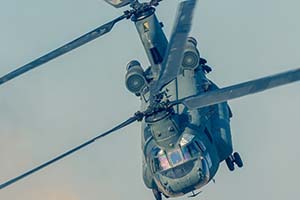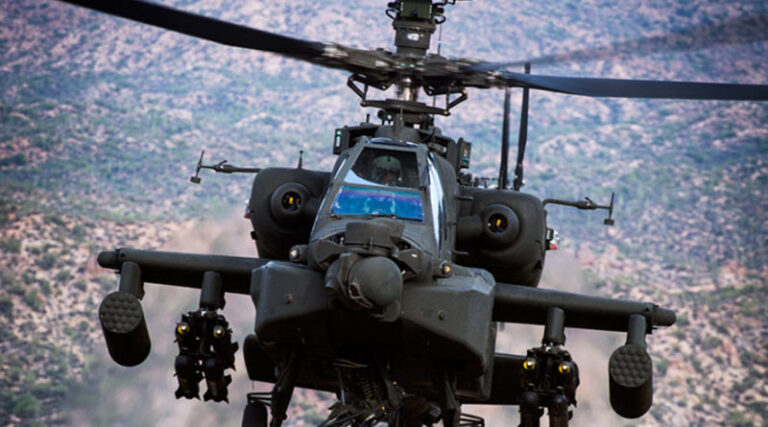CH-47 Chinook Helicopter – Making a Great Helicopter Better
The Origin and Early Developments
The CH-47 Chinook Helicopter, an enlarged version of the Vertol Model 107, emerged as the preferred choice for the Army due to its larger capacity. The prototype of this Vertol’s Model 114 was first flown on September 21, 1961, and deliveries to the Army began in 1972. The CH-47A Chinook, with its sizable twin rotors and newly developed turboshaft engines, brought a new level of airlift capability to helicopter operations.
Design and Features
The Chinook features a cargo-carrying fuselage largely clear of obstructions. The Chinook’s engine and gearbox are positioned in pylons above the fuselage. A large split double door, whose lower half also functions as a ramp, allows for easy rear access for freight or small vehicles.
The basic design features seats along each side of the fuselage, accommodating 33 troops, with the capacity to carry up to 55 in emergencies. At the end of the Vietnam War, reports indicated that a Chinook lifted 147 refugees.
Engine Development and Model Enhancements

Over the years, the Chinook helicopter underwent significant engine development. The CH-47A incorporated a high-powered T55 engine. Its successors, the CH-47B and CH-47C, received even more powerful engines and underwent design upgrades like redesigned rotor blades, strengthened gearbox, and increased fuel capacity.
The CH-47D saw a further power increase and additional equipment improvements, including night vision goggle compatibility and the addition of two hooks located under the fuselage for carrying multiple underslung loads. The CH-47D, capable of handling a 25,000lb load, nearly twice the Chinook’s original lift capacity, became the Army’s standard model. As a result, most of the earlier models underwent major refurbishment to meet the CH-47D standard.
Special Operations Variants and Future Developments
Several Chinooks were adapted for the Army’s Special Operations Forces. These Chinooks were given the title of MH-47. Equipped with a 29ft 5in refueling probe and a commercial Chinook variant nose for weather radar, these models feature improved communication and navigation capabilities. The MH-47 variants is typically equipped with two 6-barrel mini-guns for self-protection.
Development of an improved MH-47E commenced in the late 1980s, recognizable by the larger fuel pods mounted on each side of the lower fuselage and the ability to be air-refueled.
In 2001, the Special Operations Command planned to order the MH-47G, rebuilding MH-47Ds with superior navigation. There is also a plan to upgrade CH-47Ds to the CH-47F standard, requiring aircraft re-manufacturing. Upgrades will include more powerful engines, vibration reduction, improved avionics with digital mission management systems and a digital map.
This is the CH-47 Chinook
The CH-47 Chinook aircraft is one of the most reliable and efficient transport helicopters in the world. Its ability to fly fast and transport heavy loads in many different climates and wind conditions make it an invaluable part of military transport aircraft. This book is intended to introduce children to this important helicopter through striking photographs. Adults may also find themselves fascinated by the remarkable capabilities of this machine.
Chinooks in Action
Chinooks first saw combat duty in Southeast Asia in 1965 and have since been the workhorse for Army regular and special ops forces. Through numerous conflicts and rescue missions, they have proven their endurance and adaptability, becoming an indispensable part of military aviation.









